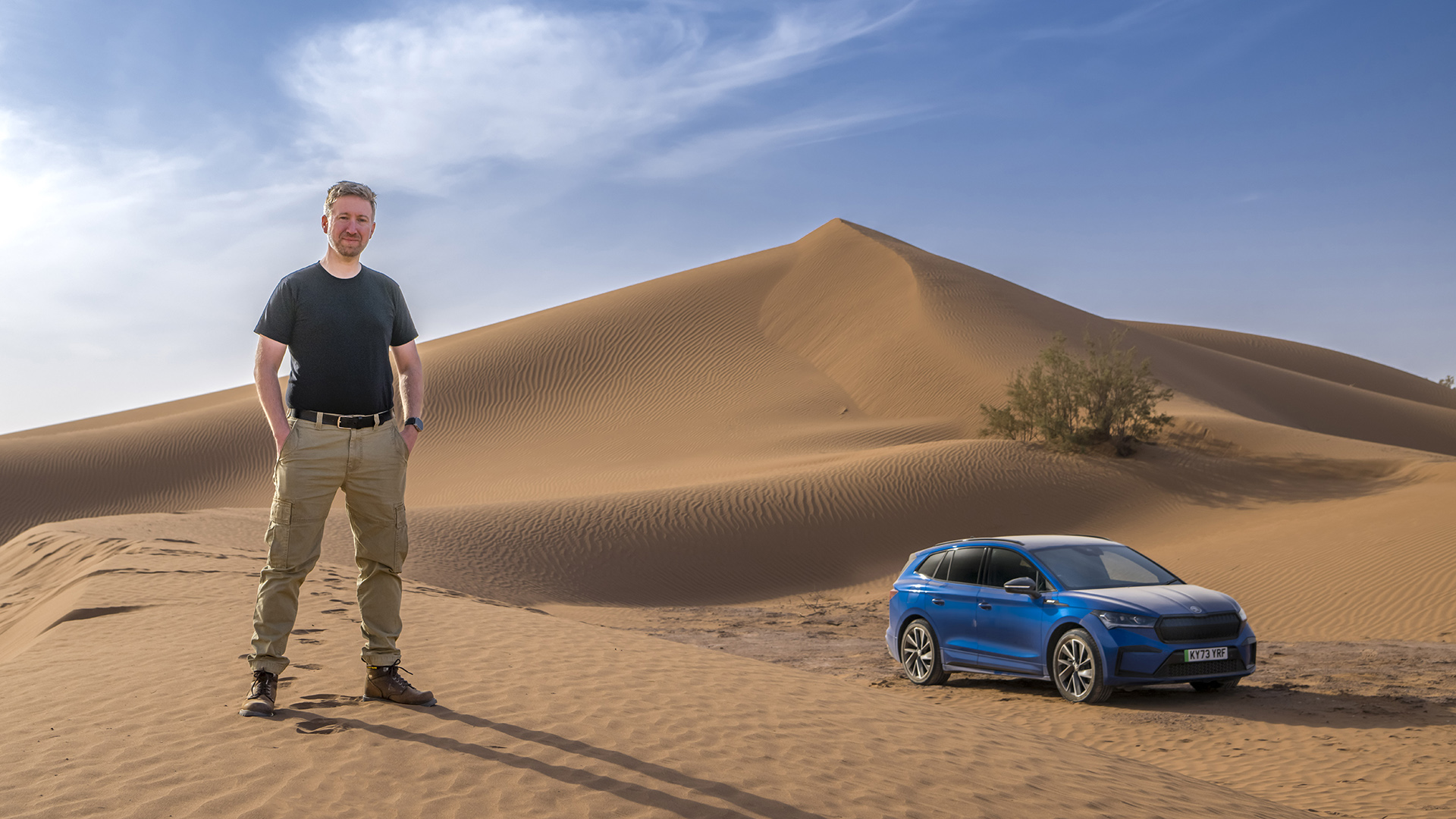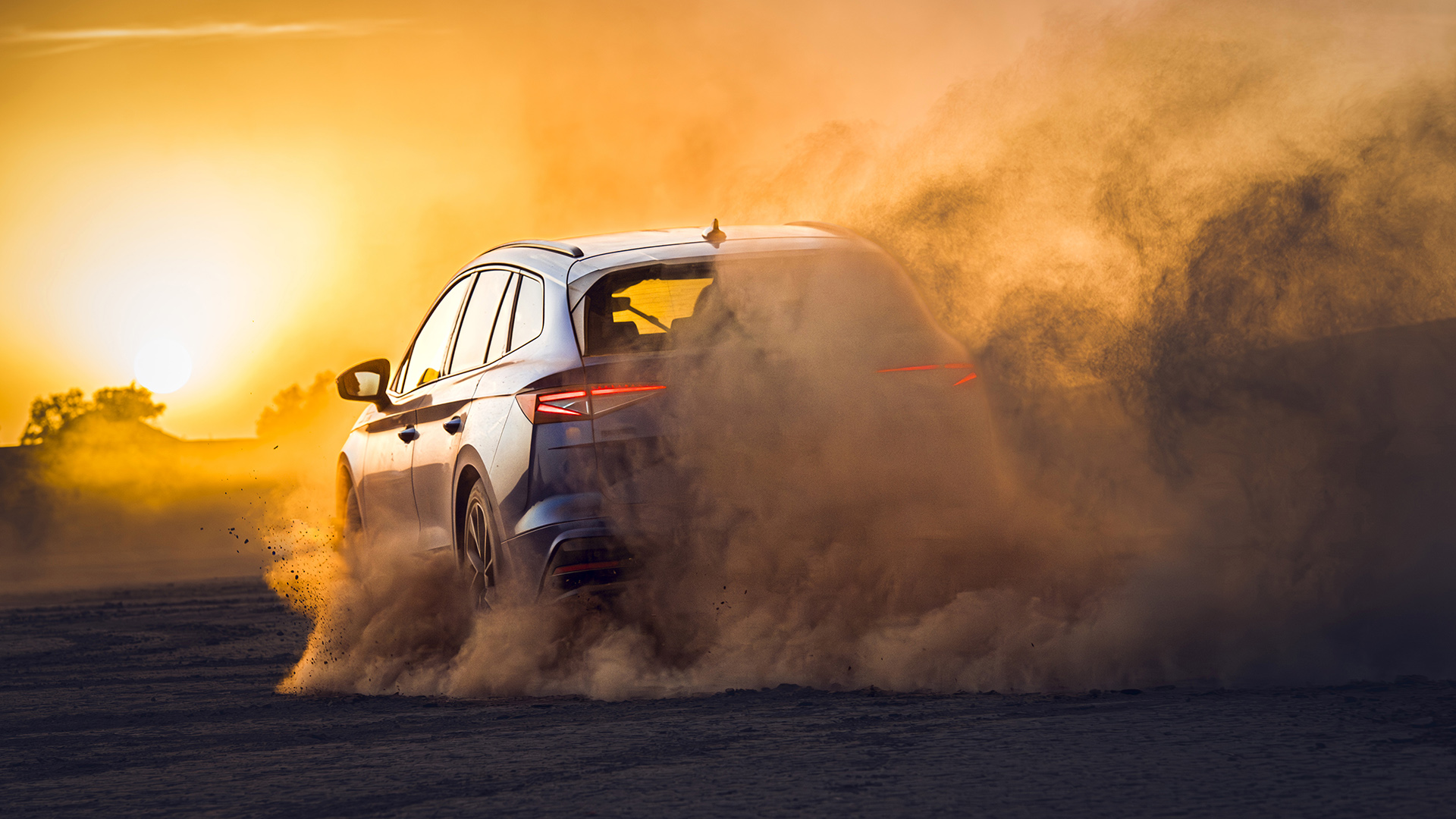
Electric cars still need to get their power from somewhere. That’s the argument often thrown at EV’s environmentally friendly credentials. But when that source is from renewable energy in the form of solar power, there’s not much doubters can say.
I was invited by Skoda to drive its fully electric vehicle through Morocco to experience how the country is embracing solar power and using renewable energy to not only supply the country but also export that power to other nations.
With a small group of journalists and crew, we would embark on a 500-mile journey, taking us down to the start of the Sahara desert and then the long journey north over the Atlas mountains to Marrakech, all on electric power.
This was also the perfect chance to challenge that range anxiety, driving long distances in a country that has even less charging infrastructure than the UK. Not only did I find that it’s possible to travel long distances in Morocco in an EV, but I met a couple who took the challenge one step further and drove all of Africa in a Skoda EV and found an ingenious solution to their charging problem.
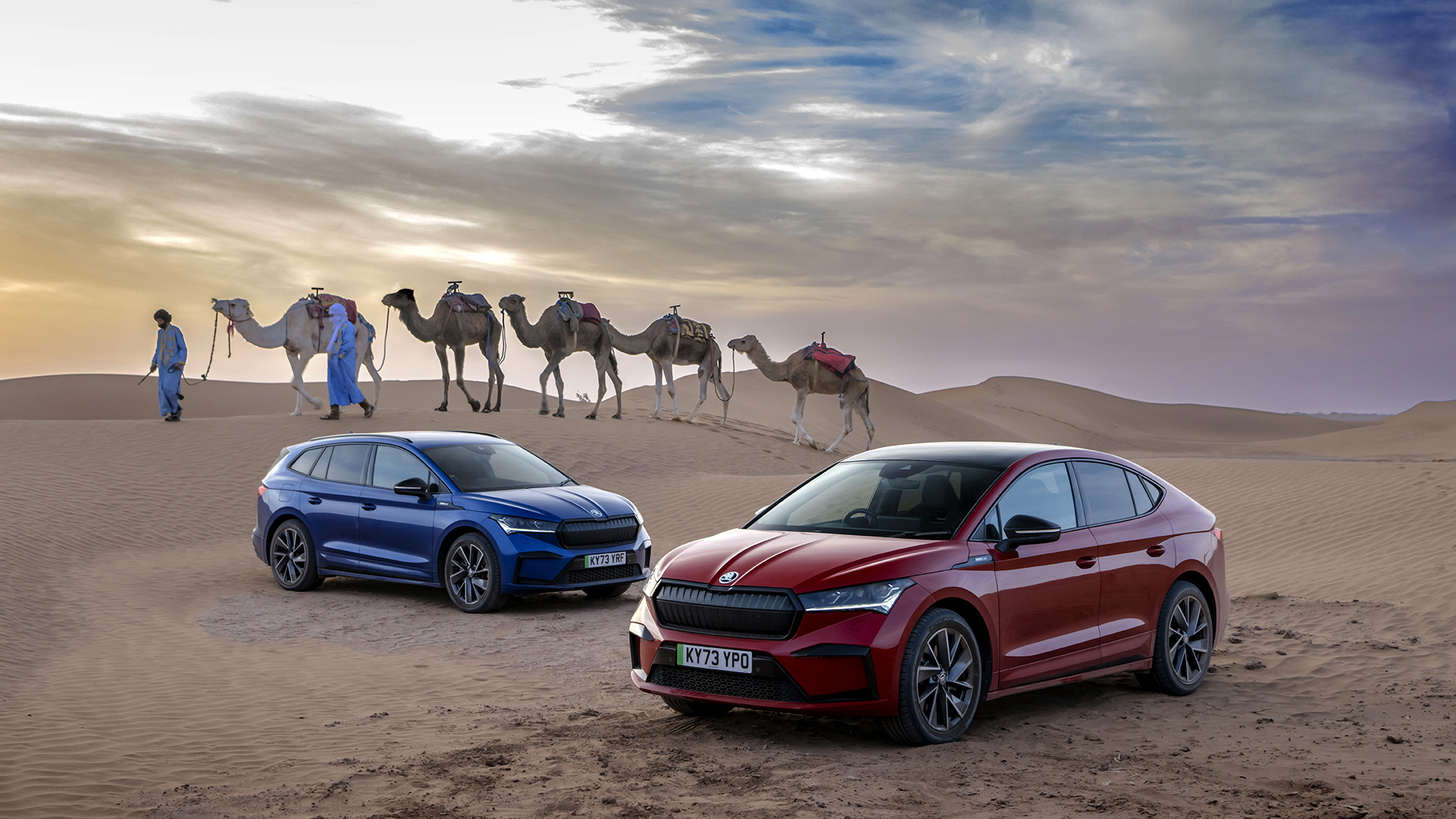
Skoda Enyaq iV 85x
To complete the challenge, we had two of Skoda’s latest EV models, the Enyaq 85x SportLine Plus and the Enyaq Coupé 85x SportLine Plus. I had previously tested the Enyaq iV 80 and the Enyaq Coupé iV vRS but these were new additions. Both models feature 4x4 all-wheel drive, heated front sports seats, LED Matrix headlights and 20-inch alloys.
From their 82kWh (77kWh nett) battery, the Enyaq 85x gives a range of up to 329 miles (529km), while the Coupé model provides a slightly longer 334 miles (537km) thanks to the more aerodynamic rear. Performance is similar too, with both offering 286ps (mechanical horsepower), a 6.6-second 0-62mph acceleration and a modest top speed of 111mph (180km/h).
The cars are near identical on the inside, with a 13-inch central touchscreen display and a smaller driver display behind the wheel. The Coupé does benefit from a panoramic glass roof, which lets more light into the cabin. However, if you need more luggage space, the Enyaq 85x gives you 585 litres, compared to the Coupé’s 570 litres.
Over the journey, I had the chance to drive both models and found that the handling and performance were very similar. Most impressively though, the EVs felt completely at ease on the winding and unpredictable Moroccan roads.

Noor Solar Plant
The world’s biggest solar power plant is located just outside Ouarzazate in southern Morocco. The Noor Solar Power Plant generates over 580 Megawatts (MW) of electricity, which is enough to power up to 2.3 million households in Morocco and first opened in 2016.
Today, the facility includes four main solar plants within the facility, including the incredible Noor 3 which looks like the antithesis of Sauron’s eye from The Lord of the Rings. Not only is this impressive close-up, but you can see the tower from miles away, with its rays causing a halo effect around the top, and small flashes of light as dust particles vaporise in its path.
A total of 7400 helio plates (giant mirrors), each the size of tennis courts, direct sunlight towards a giant tower in the centre. The tower is bathed in light which heats the molten salt to 562 degrees Celcius, generating the steam that turns the turbines and creates electricity.
@t3dotcom ♬ original sound - T3
Noor 4, the latest addition to the facility, uses photovoltaic cells to create a current, which is a more economical solution but without any form of battery storage it can only supply electricity while the sun is shining. Noor 1 and Noor 2 use a more traditional heat transfer fluid (HTF) process that can store heat to generate electricity overnight.
So could solar supply the energy needed for electric car charging? There are already plans for Morocco to supply up to 3.6 Gigawatts of solar and wind power to the UK through massive undersea cables. The Noor Solar Plant will almost certainly be part of that project.
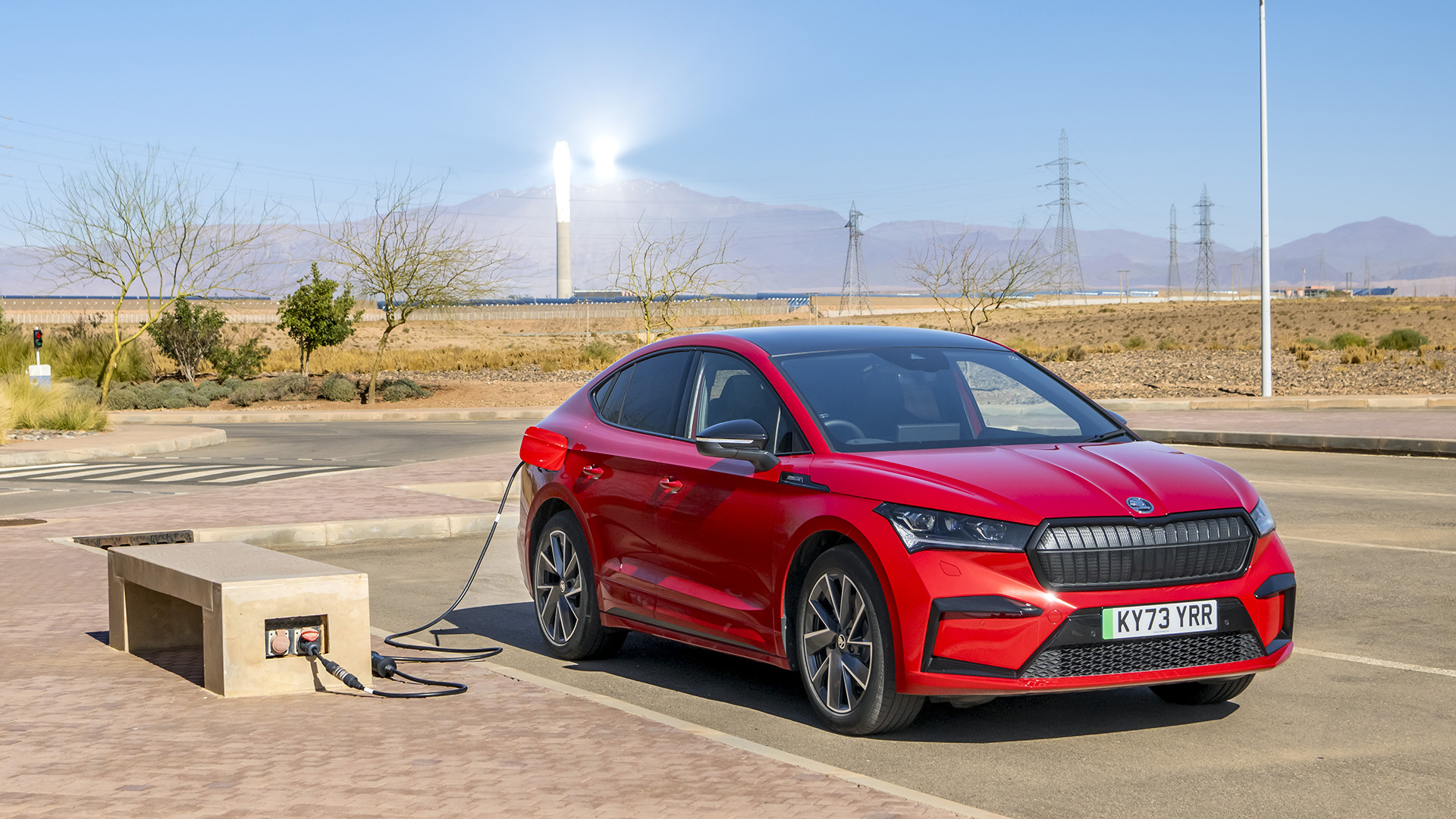
Driving towards the light
In the North African heat, the Enyaq’s range would hold it a lot better than back home in the cold. However, I would still need to charge the car at various points along the journey.
It’s hard enough finding an EV charger on the M5, but trying to locate one in Morocco felt like more of a challenge. Luckily though, this had been planned for and there were chargers in Ouarzazate to top the cars up before setting off.
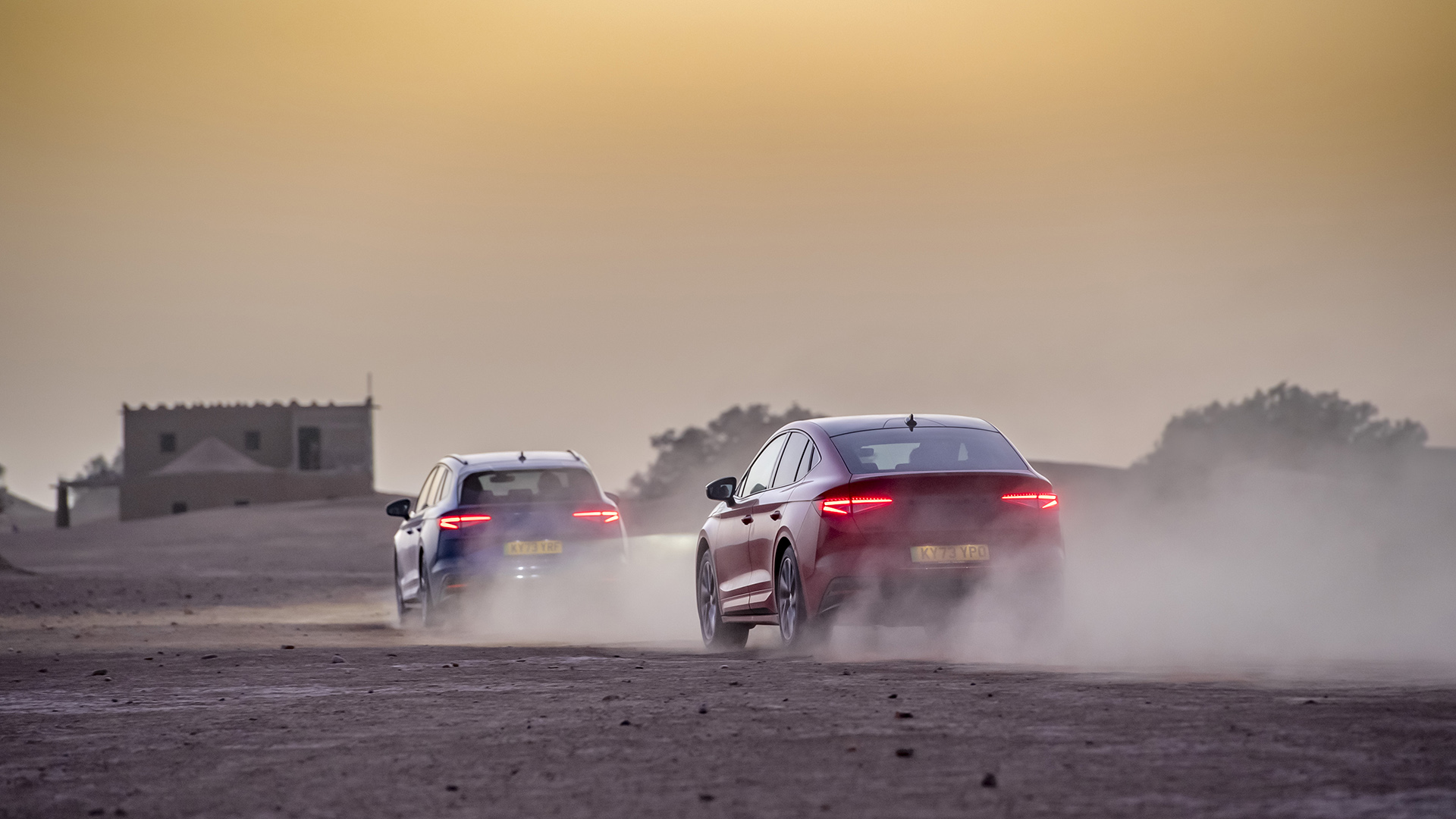
Setting off from Ouarzazate airport, it is about a 30-minute drive to the Noor Solar Power Station, with the giant gleaming tower of Noor 3 in my sights the entire way. On arrival, I was shown the complex from the viewing tower before driving out to Noor 3 where I could be amongst the helio plates.
Standing at the base of the gigantic mirror structures, they look even bigger and are programmed to track the sun so that the beam always hits the tower. From one side of Noor 3, you can barely see the other side of the circular arrangement. It’s a truly impressive facility.
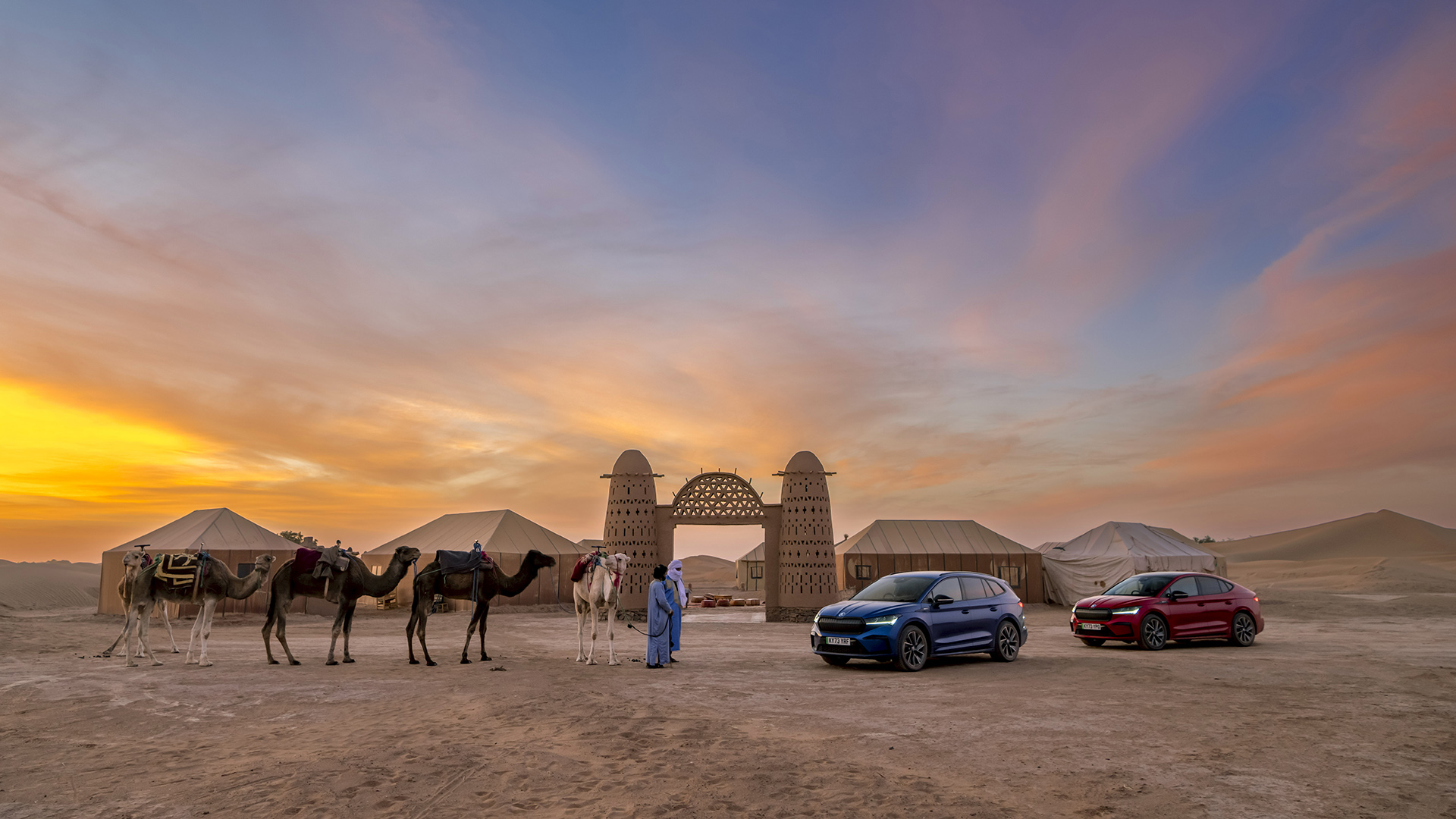
Sanday drivers
From Noor, we drove south on the N9, which runs like an artery down the country from Casablanca in the north, to near the Algerian border. This surprisingly well-maintained road took us through small towns and villages, police checkpoints and vast expanses of scrubland. The road weaves through some mountains with tighter corners and vertiginous drops, before transforming into more of a desert landscape on the other side.
I stopped in the town of Zagora for some lunch after about two and a half hours on the road. Then continued for another hour and a half to the small town of Mhamid where the N9 ends.
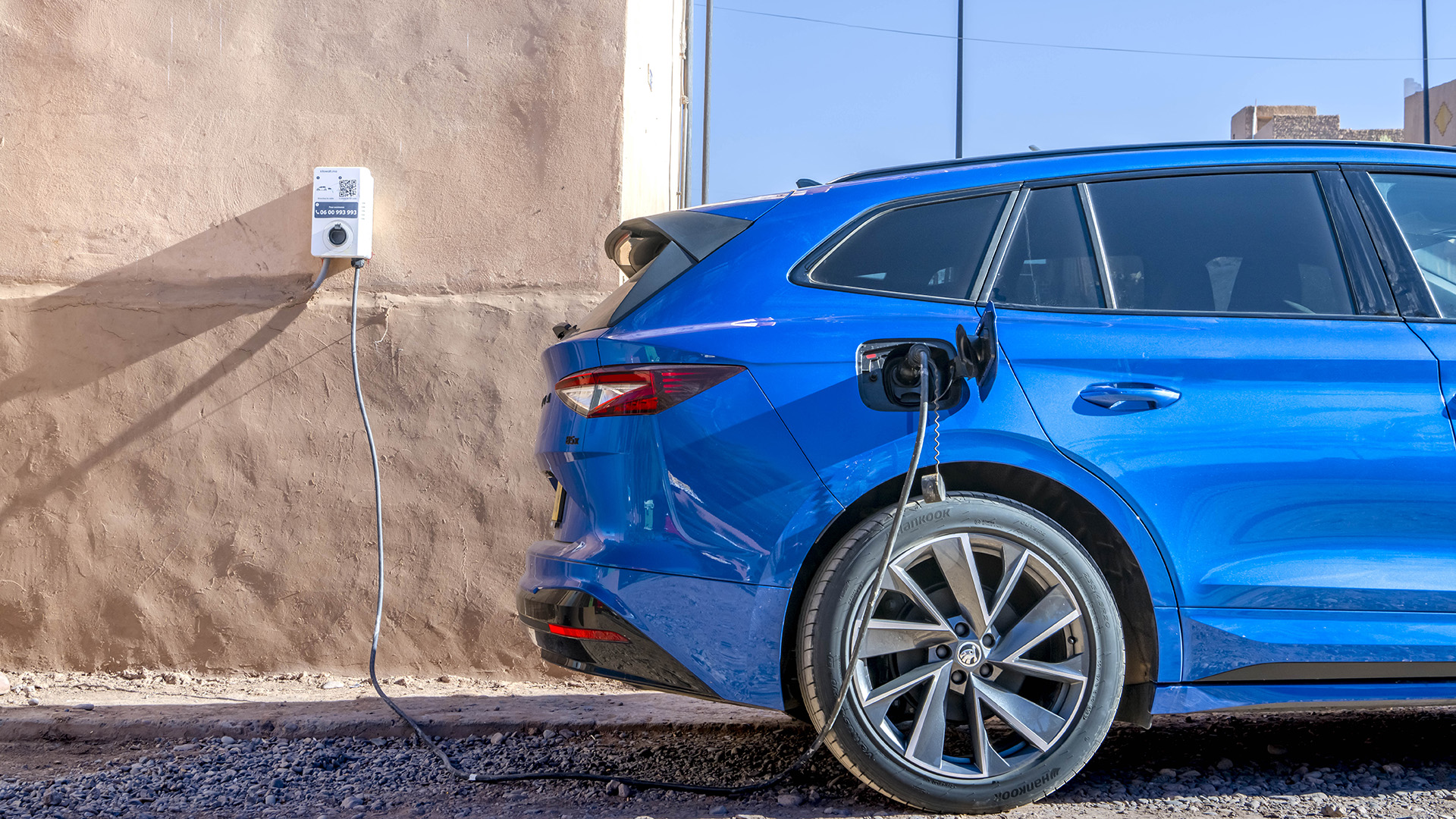
Just because the road ends, doesn’t mean you need to stop driving. Switching the Enyaq into Traction Mode, we continued in convoy across the sandy track and into the Sahara desert. Patches of soft sand needed quick adjustment of the wheel to keep us on track and I needed to keep the speed up to avoid getting stuck.
The light was fading by the time we reached the camp, a traditional Berber camp that had been designed to accommodate Western tourists. Driving across the sand took more battery than road driving, so the range was pretty depleted.
Luckily there was an EV charger pretty close. The Sbai Palace Hotel in Mhamid (right at the end of the N9) had recently installed a 22kW EV charger, making it the perfect destination for EV drivers.
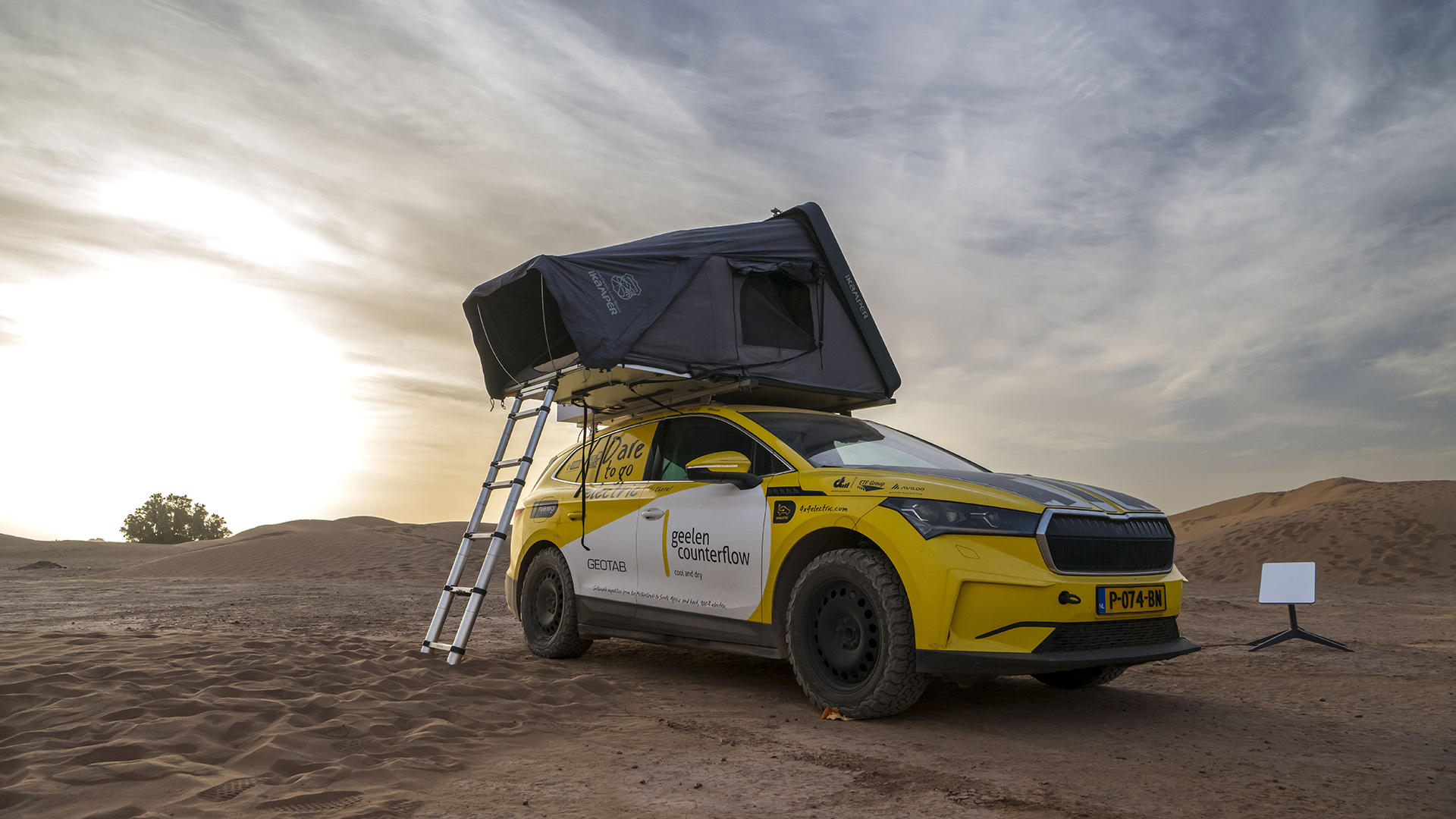
4x4 Electric
Maarten van Pel and Renske Cox recently completed a 13-month trip around Africa in a Skoda Enyaq and joined us in the desert camp. The Dutch couple’s 4x4 Electric expedition covered 40,000 km in total and saw them living in the car and charging using solar panels.
For the solar charging, the couple worked with engineers to develop a more efficient system to get the maximum power from the panels. Most solar charging systems, such as those used with portable battery power stations, like EcoFlow and Anker, convert the DC current to AC for storage and then need to convert it back to DC for EV charging.
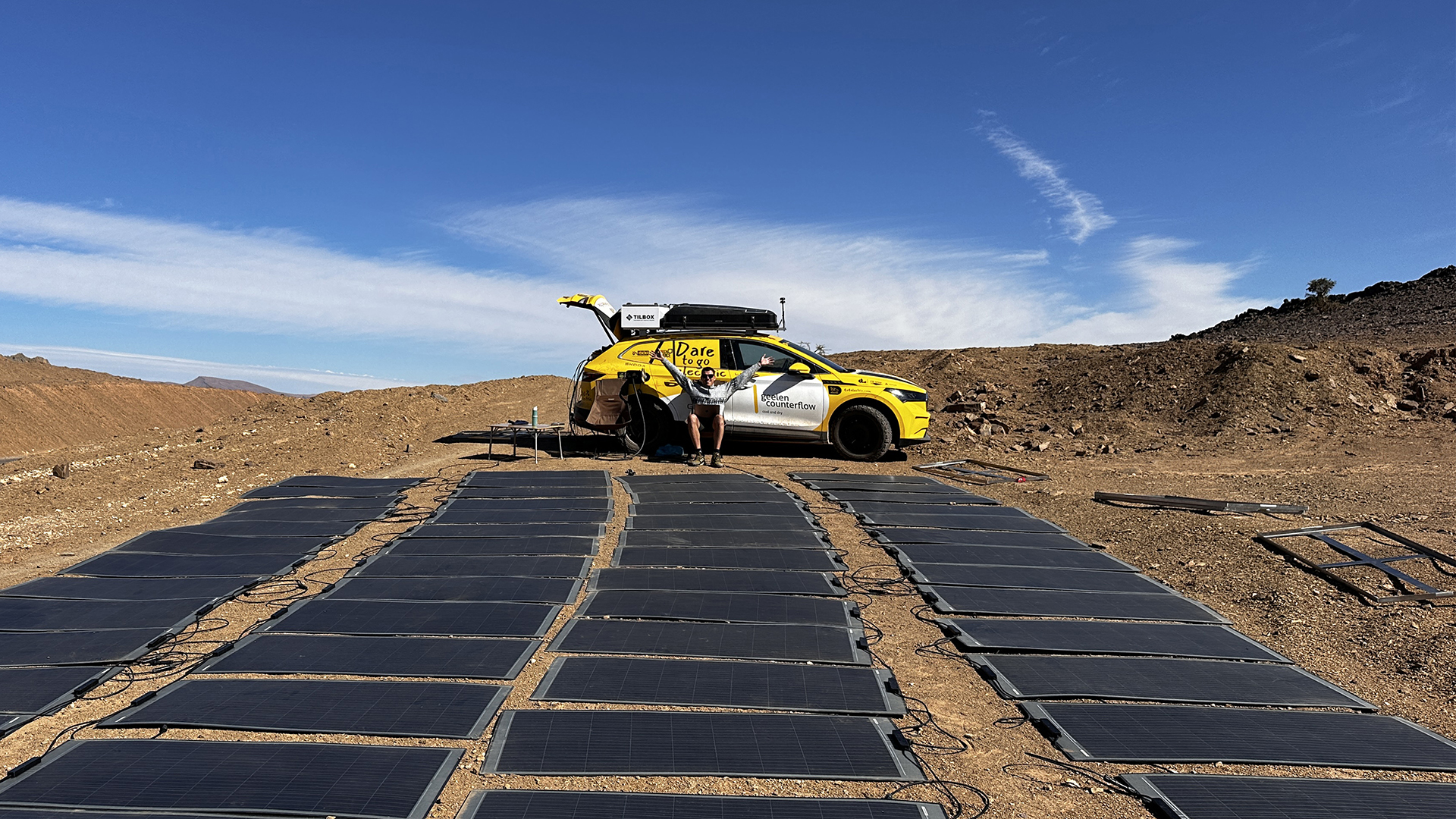
This process wastes a large amount of power making the charging less efficient. The system they developed keeps the current in DC, so less energy is wasted in the process. It means that with their huge array of solar panels laid out on the ground, they were able to produce up to 6kW of power to charge the car.
This level of charging meant that it could take a full day before they were ready to get on the move again. They also had to drive efficiently, often at slower speeds, to maximise their range.
They are now working with a company to produce a commercially available version of their DC solar charger. This could help other EV adventurers and even provide a nice top-up power for EV campers away from the grid.
One luxury item on board their extremely well-packed car was a Starlink receiver for high-speed internet, which connects directly to satellites for connection even when you're off the grid. For Morocco, I was using a mobile WiFi hotspot for my connection, which gave me a decent connection most of the time.
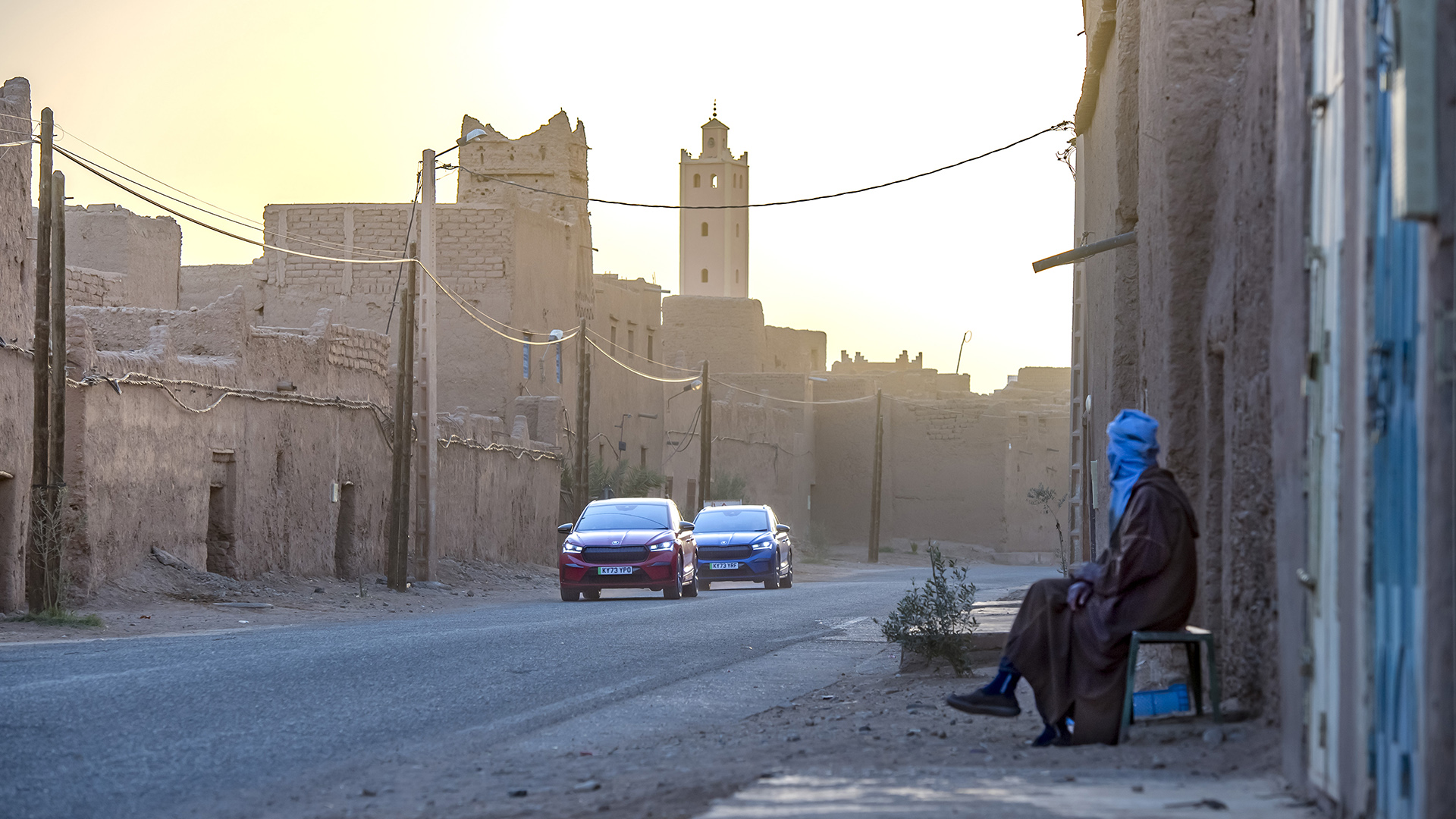
The Marrakech express
Leaving the desert again, I topped up the car and headed back on to the N9. The roads were impressively smooth and well maintained, especially as it winded its way up and over the more mountainous sections.
It’s easy to forget that you’re in an electric car when you’re engrossed in incredible scenery and your battery still has hundreds of kilometres in the tank. Each time I stopped for lunch or coffee, I plugged in the car, and never got below around 40% battery – the need for food and drink meant that no section of the drive was longer than about three hours, which meant no more than a few hundred km.
To reach Marrakech I had to cross the Atlas mountains, which saw the road get windier and rise quickly. Some sections were endless hairpins, as the car scaled the side of the mountain, but the Enyaq took it in its stride, with plenty of torque. Yes, it would have been nice to take something sportier on this route but this EV showed it was more than capable.
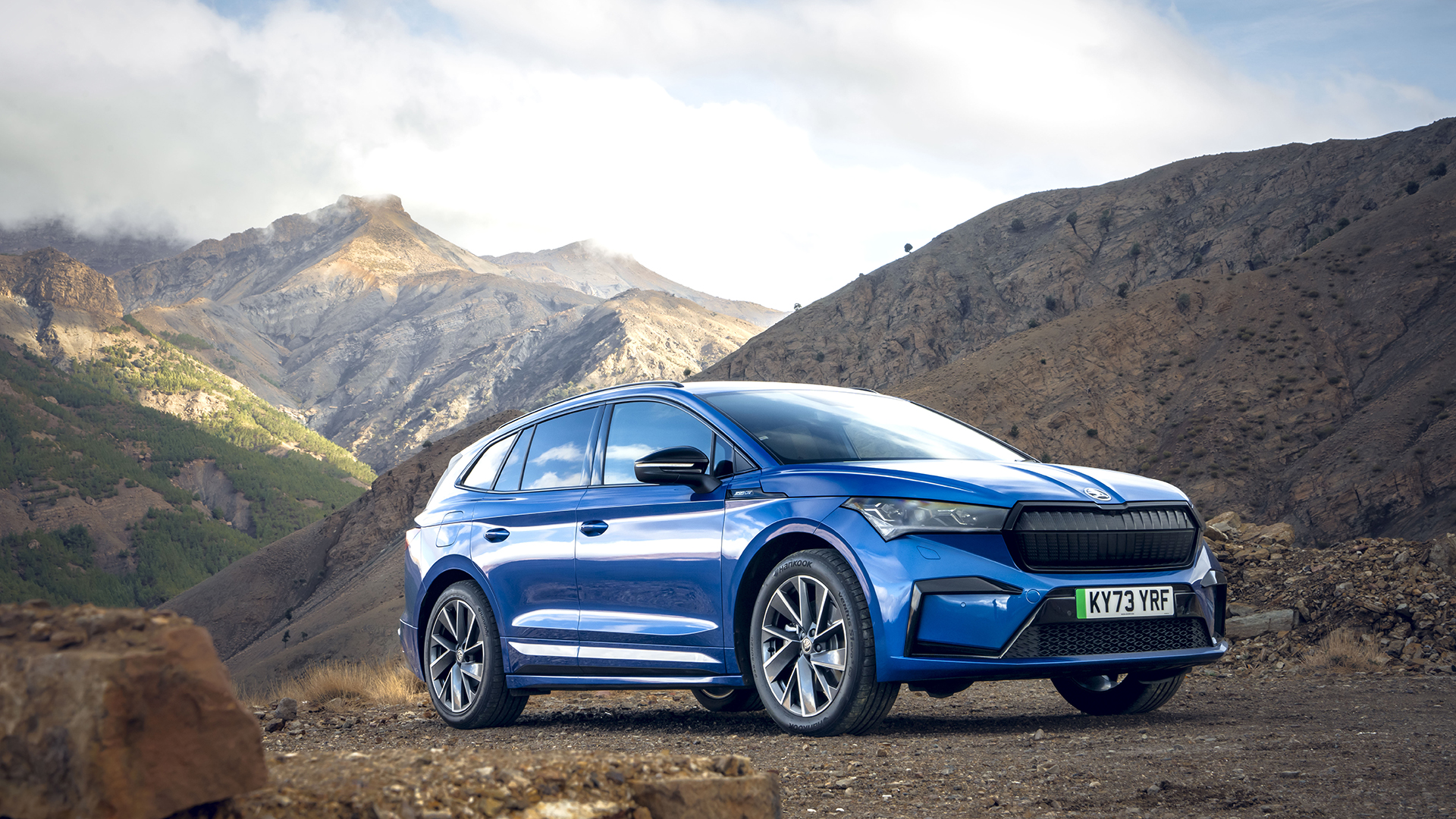
Coming back down the other side, the Enyaq benefitted from that regenerative braking and coasting, actually putting range back into the battery. By the time I was back on flat land, the car’s range had hardly changed from what it was at the top.
The landscape changes again north of the mountains and becomes greener, while the towns and villages are much busier with tourists and locals. A look down at the range again told me I still had plenty on board as we pulled into the Royal Moroccan Golf Course to top up again before handing the car back.
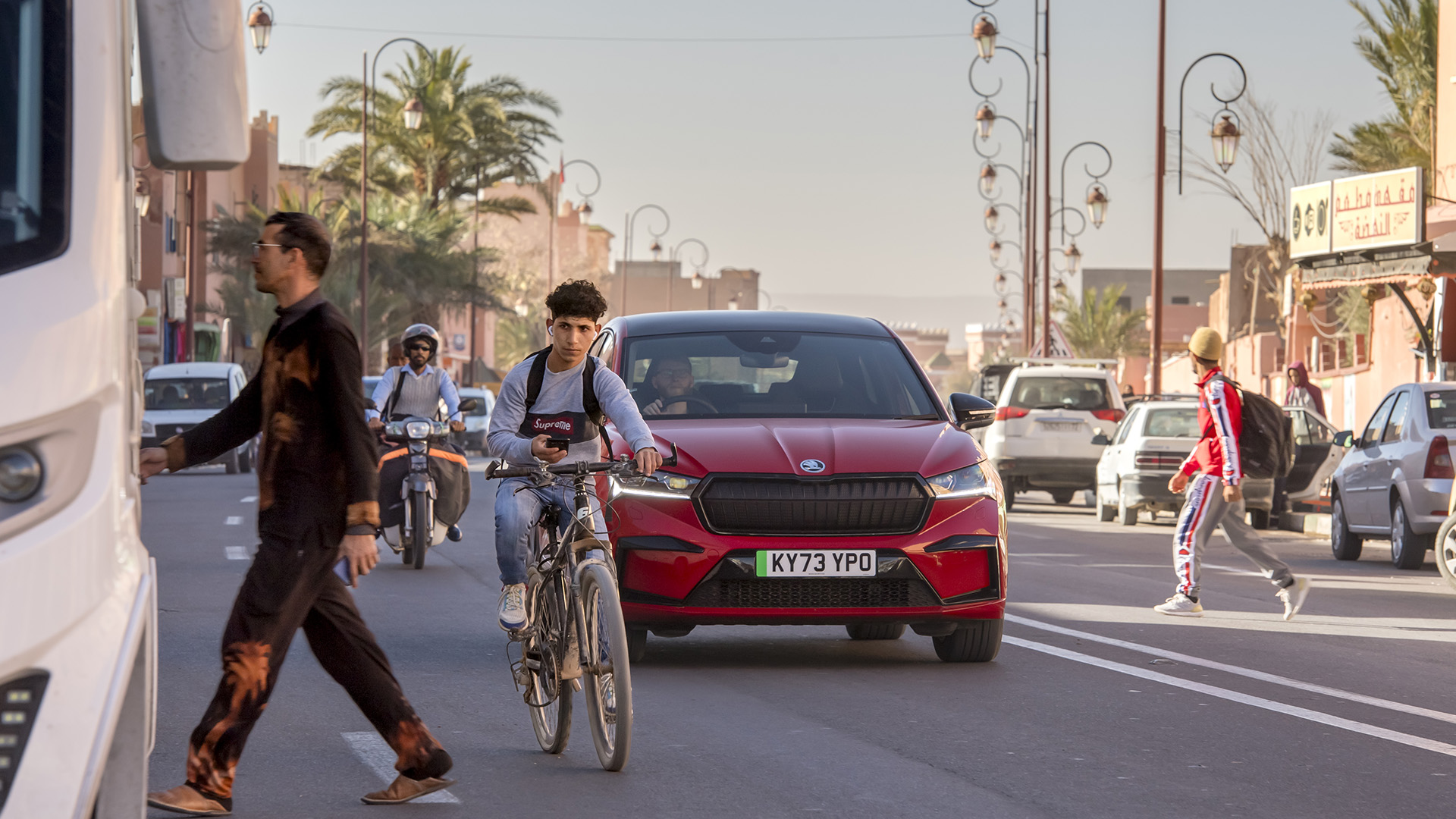
Long-distance EV travel has come a long way
Just a few years ago, the idea of travelling great distances in an EV seemed like hard work. Having previously driven half-way across the US in an EV, I was confident of the car’s ability to do the trip, but I did have my doubts about the infrastructure.
Luckily, I found that with a little more careful planning, finding stops where you can charge an EV is possible, even in Morocco. And for more remote drives, there can still be ingenious solutions, such as the solar panels used by the 4x4 Electric team.
The power of the sun in places like Morocco makes solar an obvious choice for supplying the electricity needed to charge electric cars. However, various forms of renewable energy can provide this power, such as wind and hydroelectric power. With the right infrastructure in place, driving an electric car is no more difficult than a petrol one, even off-road.
